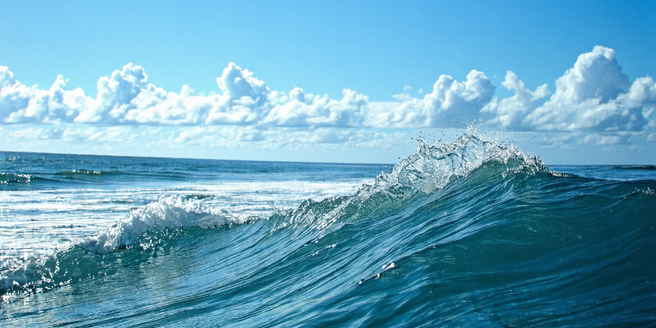
Understanding Ocean Currents: Types and Functions
Ocean currents are vast, continuous streams of seawater that flow through the world’s oceans. They are primarily driven by wind patterns and the Earth’s rotation, known as the Coriolis effect. There are two main types: surface currents and deep-water currents. Surface currents are influenced by wind and cover about 10% of the ocean’s surface. They play a crucial role in regulating temperature by distributing heat across the planet. Deep-water currents, on the other hand, are driven by changes in water density, often due to variations in salinity and temperature. These currents form part of the global conveyor belt, moving nutrients and elements crucial for marine life. Understanding their paths and patterns helps in predicting climate changes and marine biodiversity distribution.
The Science Behind Weather Front Formation
Weather fronts are transition zones between two air masses with distinct temperature and humidity differences. They are formed due to the atmospheric dynamics that make warm and cold air collide. There are several types of fronts—cold, warm, stationary, and occluded—each with its unique characteristics influencing weather patterns. Cold fronts occur when a cold air mass moves under a warm air mass, often resulting in stormy weather. Warm fronts happen when warm air overrides cold air, leading to gradual weather changes like drizzle. Stationary fronts form when two air masses stall, typically bringing prolonged gray skies and precipitation. Occluded fronts arise when a cold front overtakes a warm front, causing complex weather patterns. These fronts are crucial in meteorology, helping forecast weather events.
How Ocean Currents Influence Climate Patterns
Ocean currents significantly influence global climate patterns by redistributing thermal energy across the planet. They act as heat engines, transporting warm water from equatorial regions toward the poles and cold water from the poles towards the equator. This redistribution of heat helps moderate the climate of coastal regions, making them milder than inland areas. For instance, the Gulf Stream carries warm water from the Gulf of Mexico towards Europe, contributing to the milder climate in Western Europe compared to other regions at the same latitude. Ocean currents also impact precipitation patterns by influencing the development of weather systems. Their role in regulating sea temperatures affects the formation of tropical storms and ensures the sustenance of distinct climate zones.
Case Studies: Ocean Currents Impacting Global Weather
Several case studies underscore the impact of ocean currents on global weather. The El Niño-Southern Oscillation (ENSO) is a well-known climate phenomenon resulting from variations in Pacific Ocean currents. During El Niño events, warmer ocean currents disrupt typical climate conditions, leading to increased precipitation and flooding in some regions, while causing droughts in others. The Humboldt Current off the coast of South America is another example, where nutrient-rich cold water supports one of the world’s largest fisheries. Changes in this current can drastically affect local climates and economies. Similarly, the Indian Ocean Dipole impacts weather patterns across the Indian Ocean, influencing rainfall and droughts in surrounding areas. These case studies highlight the interconnectedness of ocean currents and global weather dynamics.
Future Implications of Changing Ocean Currents
Climate change poses significant threats to the stability of ocean currents, with potential global consequences. Changes in temperature and salinity can alter current patterns, potentially disrupting the global conveyer belt system. This would have profound implications for climate systems, particularly regarding heat distribution and weather patterns. For example, a slowdown in the Atlantic Meridional Overturning Circulation (AMOC) could lead to harsher winters in Europe and more intense weather systems in the Atlantic. The shift in currents might also affect marine ecosystems by altering habitats and disrupting food chains. Predicting these changes is crucial for preparing and adapting global policies to mitigate the impacts on climate, economies, and biodiversity caused by altering ocean currents.
